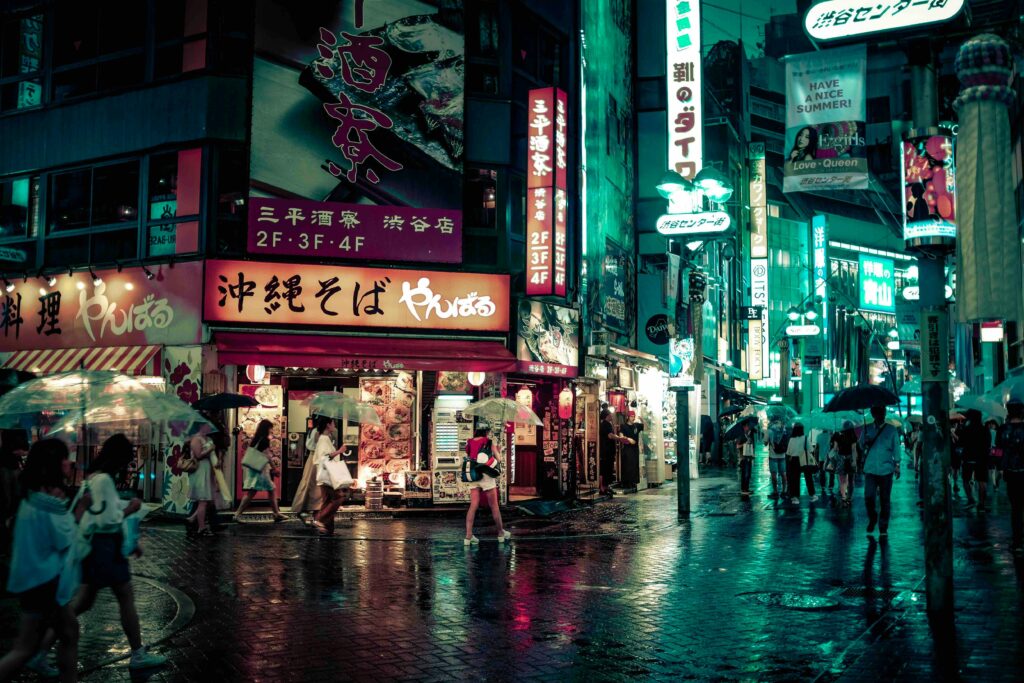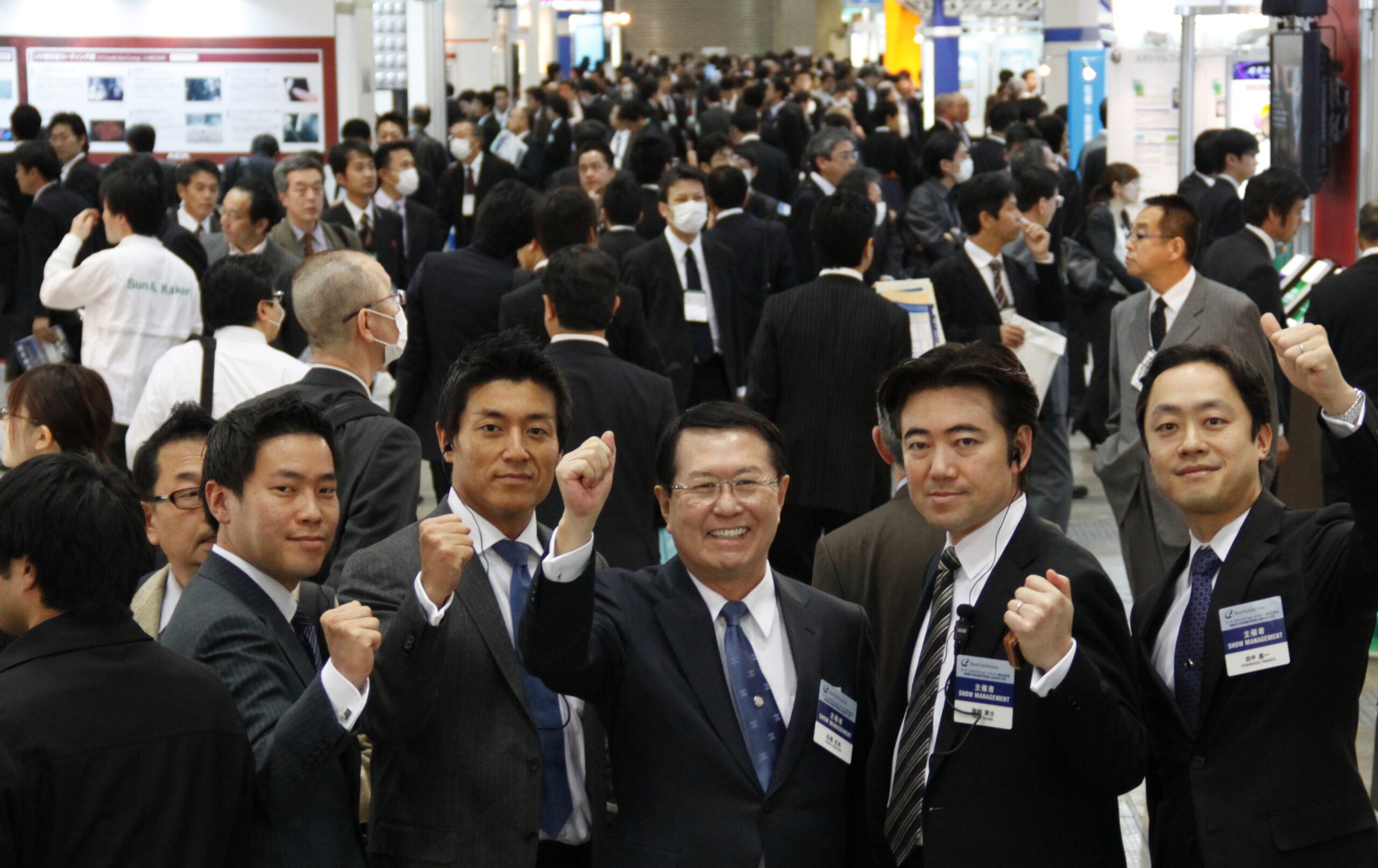On 11 March 2011, employees of Reed Exhibitions Japan, one division of the world’s largest international exhibition organiser, were gearing up for three exhibitions scheduled to begin in April, buoyed by the fact that the growing events were set to be 30 per cent larger than in 2010.
The event trio included one of the world’s largest exhibitions in the field of liquid crystal and plasma display manufacturing, the 21st FineTech Japan, as well as the second high-function film show FilmTech Japan and the inaugural light and laser technology event Photonex. With 820 exhibitors and 60,000 visitors expected, of which 5,000 were travelling from overseas, these exhibitions were the first of 25 shows Reed had planned for Japan over a three-month period.
But this was all about to change. At 2:46pm, as post-lunch meetings got underway, screams began to ring out and terror set in as the Reed office on the 18th floor of a 50-storey skyscraper in Tokyo began to sway alarmingly. Not one employee managed to stay on their feet. When the listing settled Reed hastily evacuated the office. Since all means of transport – public and private – had ceased, employees walked for five or six hours to get home; others stayed in nearby hotels, or gathered together in public buildings and parks.
Hours away from the stricken Japanese capital, Reed Exhibitions Japan president and chairman of the Japanese Exhibition Association (JEXA), Tad Ishizumi, was making every effort to get home from a business trip. Unable to reach his wife or any of his colleagues on their mobile phones, he resigned himself to spending another night at his hotel, his isolation compounded when nobody picked up the office phone. Flicking on the news channel in the hotel, reports showed devastation in the Tohoku region and scenes of chaos in Tokyo. Ishizumi was so worried he didn’t sleep a wink.
The following day he managed to get back to Tokyo and confirm his wife was safe. He contacted his executive staff and when he found out that both the office and employees were secure, he attempted to relax a little.
But it was at that moment, while wondering if there was anything that could be done for the disaster-stricken area, that his concerns ballooned. Reed Exhibitions Japan had 25 exhibitions to organise by the end of June. Worried that he might be forced to cancel them, he called an emergency meeting. There was a palpable air of tension among the 30 executive staff who assembled for the meeting early the following Monday. In the back of his mind Ishizumi felt the same way they did, but he made an effort to act as composed as possible and set about issuing instructions.
“First, let’s get the facts straight,” he said. “We will telephone the 2,000 companies exhibiting at the 25 pre-July exhibitions, and tell them we intend to hold the exhibitions as scheduled. Depending on their responses, we should be able to get a clearer understanding of their damage situation, their intention to exhibit, and opinions about holding the exhibitions.”
At seven in the evening, as soon as the company had finished calling Japan and Asia, the employees set about contacting Europe and then America, where the day was just starting. By the following morning, they had finished. “We were only able to speak to fewer than 1,000 companies, but it was enough to be able to attain our objective,” Ishizumi says. “To start with, around 20 per cent of exhibitors answered that they were considering cancellation because they were certain of a sharp drop in visitor numbers. Some companies among them were even indignantly saying, ‘At a time like this, you should show some self-restraint and cancel the event!’”

But others were keen to uphold their commitment to the show, despite the potentially low turnout. Sixty per cent of the corporations said they would exhibit as scheduled, including 16 companies from the disaster-stricken area itself. “They told us they had sustained damage but since FineTech is vital for business, they would exhibit in the hope of recovery,” he says. “This made us feel that we should hold the exhibition after all.”
Small or medium-sized companies account for the majority– of exhibitors at most exhibitions, and for many these events are the biggest opportunity for sales. It’s the reason such companies register a year in advance and invest considerable resources in making their involvement a success. Cancellation comes at a real cost, and the world’s leading organisers understand this. Exhibitions are a gathering of companies in the same industry and if, for example, one company claims that the exhibition is cancelled, this rumour can be all over the industry in no time with the consequent risk of one exhibitor after another cancelling.
“Something obvious that tends to be forgotten is that exhibitions are not only about the organisers, but for the exhibitors, the visitors, the venue and the supporting companies as well,” Tad Ishizumi explains. “That is why they register a year in advance and invest money, time and energy. In short, among different types of events, exhibitions have stronger commercial significance and a higher level of seriousness. If we keep this in mind, exhibitions must not be cancelled so easily.”
By promptly distributing correct information about the effects of the earthquake, Ishizumi hoped to prevent just such a situation developing.
What he couldn’t account for, however, were the growing problems at the nuclear power plant at Fukushima. The severity of the situation was worsening and organisers throughout Japan were cancelling their shows. Indeed, the number of cancellations increased dramatically, as exhibitors grew fearful that the halls would be empty and perhaps even without power. The mood of self-restraint grew stronger.
Ishizumi came off the phone to his colleagues, now aware that 80 per cent of the 180 overseas corporations scheduled to exhibit at FineTech had requested the event’s cancellation – to his mind the result of excessive and exaggerated reports in the overseas media of problems at Fukushima . One exhibitor announced that “The food and water in Japan is covered in radiation, and going to Japan is like going to die. We are cancelling our participation.” In addition, Ishizumi had cancellations from another country saying, one potential exhibitor saying “We heard many countries are repatriating their own citizens because Fukushima is close to Tokyo. Holding the exhibition is crazy.”
In an effort to overcome initial fears that Tokyo was near to the Fukushima plant, Ishizumi commissioned maps to visually convey the fact that Tokyo was actually 230km away and 400km from the epicentre of the earthquake. The company also explained that the Japanese Government had set the evacuation zone at 20km from the power plant – the US Government, with its highly cautious stance, had set it at 80km. This clarification changed the mind of some considering withdrawal. He also presented a report from the Nikkei, Japan’s most influential economic newspaper, explaining that the radiation level in Tokyo would not pose a threat to health.

Despite this, the pressure was made worse by the fact that many observers from the exhibition industry, politics, government and other industries were watching FineTech with intense interest. Since almost all exhibitions in Japan had been cancelled after the earthquake, the success or failure of FineTech would be seen as an indicator for the other international exhibitions and conventions that were to follow.
The company more than tripled its telephone invitations from 3,000 influential buyers in Japan to 10,000 people. Ten staff members responsible for FineTech in Japan and 20 part-time workers made one phone call after another from morning until night, urging attendance at the exhibition. Ishizumi had to curb any possibility of a drastic reduction in the number of visitors.
“Before we knew it, it was 10 o’clock in the morning of 13 April; the first day of the exhibition. When the doors opened we were astonished. Tens of thousands of people began piling in. It was overwhelming. We had been choked by a deep anxiety that the visitor numbers would drop, an anxiety that would not vanish until we actually saw it happening.”
Three days later at 5pm, as the show organisers closed FineTech’s doors, the dust began to settle. Where the number of visitors had been expected to reach half of the previous year at a stretch, it instead increased daily until it reached 55,323 people: a figure on a par with the previous year.
“When I spoke at the reception party about what we’d achieved for the FDP [Flat Display Panel] sector, and the economic recovery of the Tohoku region, there was a huge round of applause in the middle of the speech – something that is not customary for Japanese people,” says Ishizumi. “Almost all the exhibitors signed contracts for the next exhibition. Two hundred companies that had cancelled their participation at the last minute, or hadn’t been scheduled to exhibit, told us they regretted not exhibiting, that they had decided to participate next time, and signed contracts for the next exhibition on the spot. During the show period alone, there was actually an increase of 10 per cent from this year to next year in applications for exhibit booths, reaching a total of 1,450 booths.”
The show must go on, he explains: “Exhibitions revitalise every industry and bring benefits to the exhibitors and to the visitors. This is linked to developing the economy of Japan and the reconstruction in Tohoku. If we had exercised self-restraint, it would only have delayed the reconstruction. Instead, we needed to be even more assertive about holding shows than in the past.
“Small or medium-sized corporations account for 70–80 per cent of exhibitors at most exhibitions, including FineTech. Unlike major corporations, their selling powers are weak even if they have excellent products, and for many the exhibitions are the biggest opportunity for sales. In order to meet their expectations we must not cancel any exhibitions unless there are extraordinary circumstances.”
The schedule was maintained, everyone involved was kept informed to the best of Reed’s ability through constant updates and the efforts of a round-the-clock team: remarkably, the event was an enormous success. Those in the industry who at first had held their breath now gave Reed Exhibitions Japan the praise it deserved.
This success story has since become a topic of conversation throughout Japan’s exhibition sector and beyond, and qualifies not just as one of the global exhibition industry’s greatest examples of how to work together to overcome adversity on an unprecedented scale, but as one more celebrated example of the significance of a global exhibition to the market it serves.


Leave a Reply